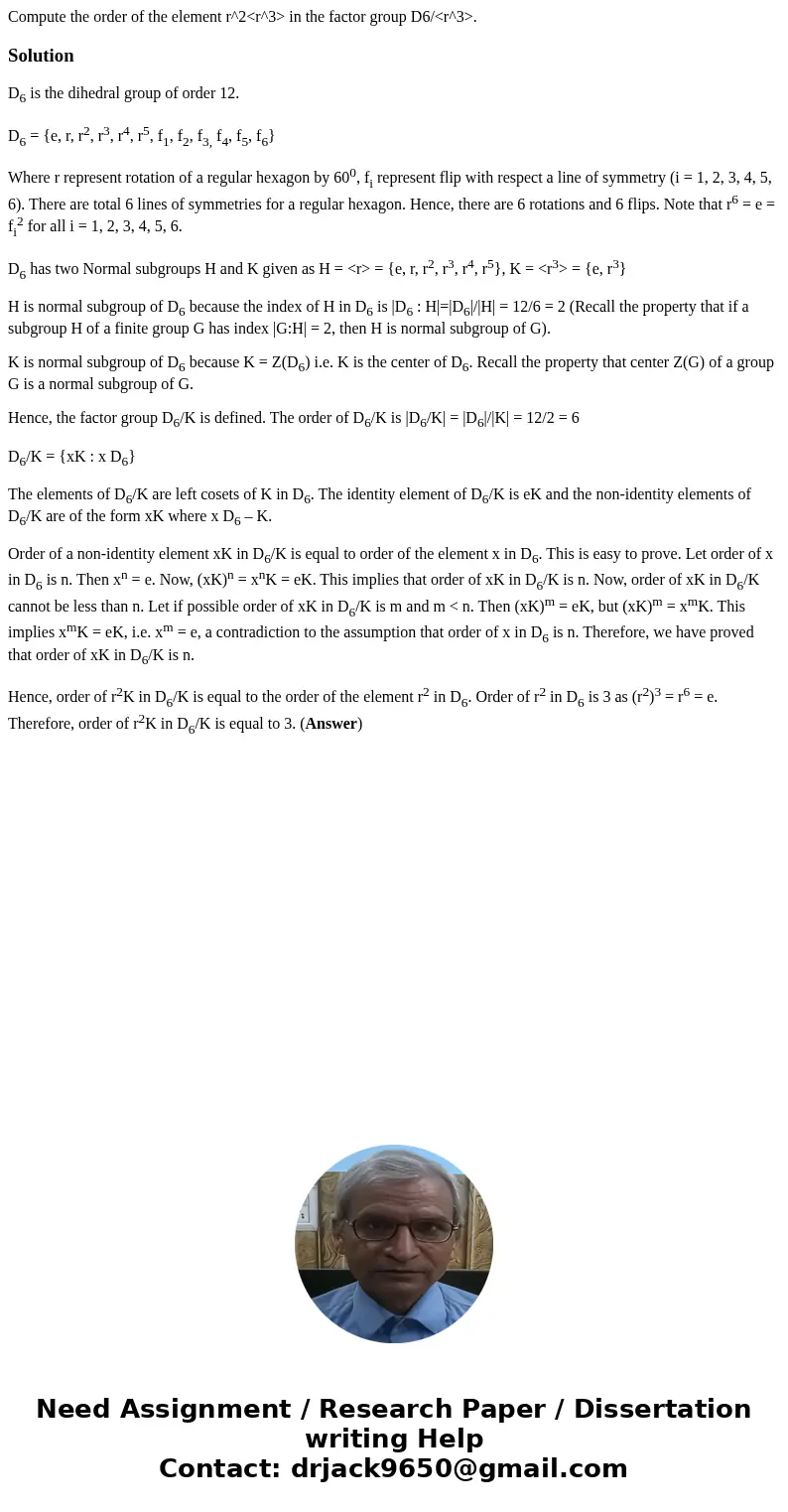Compute the order of the element r2 in the factor group D6So
Compute the order of the element r^2<r^3> in the factor group D6/<r^3>.
Solution
D6 is the dihedral group of order 12.
D6 = {e, r, r2, r3, r4, r5, f1, f2, f3, f4, f5, f6}
Where r represent rotation of a regular hexagon by 600, fi represent flip with respect a line of symmetry (i = 1, 2, 3, 4, 5, 6). There are total 6 lines of symmetries for a regular hexagon. Hence, there are 6 rotations and 6 flips. Note that r6 = e = fi2 for all i = 1, 2, 3, 4, 5, 6.
D6 has two Normal subgroups H and K given as H = <r> = {e, r, r2, r3, r4, r5}, K = <r3> = {e, r3}
H is normal subgroup of D6 because the index of H in D6 is |D6 : H|=|D6|/|H| = 12/6 = 2 (Recall the property that if a subgroup H of a finite group G has index |G:H| = 2, then H is normal subgroup of G).
K is normal subgroup of D6 because K = Z(D6) i.e. K is the center of D6. Recall the property that center Z(G) of a group G is a normal subgroup of G.
Hence, the factor group D6/K is defined. The order of D6/K is |D6/K| = |D6|/|K| = 12/2 = 6
D6/K = {xK : x D6}
The elements of D6/K are left cosets of K in D6. The identity element of D6/K is eK and the non-identity elements of D6/K are of the form xK where x D6 – K.
Order of a non-identity element xK in D6/K is equal to order of the element x in D6. This is easy to prove. Let order of x in D6 is n. Then xn = e. Now, (xK)n = xnK = eK. This implies that order of xK in D6/K is n. Now, order of xK in D6/K cannot be less than n. Let if possible order of xK in D6/K is m and m < n. Then (xK)m = eK, but (xK)m = xmK. This implies xmK = eK, i.e. xm = e, a contradiction to the assumption that order of x in D6 is n. Therefore, we have proved that order of xK in D6/K is n.
Hence, order of r2K in D6/K is equal to the order of the element r2 in D6. Order of r2 in D6 is 3 as (r2)3 = r6 = e. Therefore, order of r2K in D6/K is equal to 3. (Answer)

 Homework Sourse
Homework Sourse